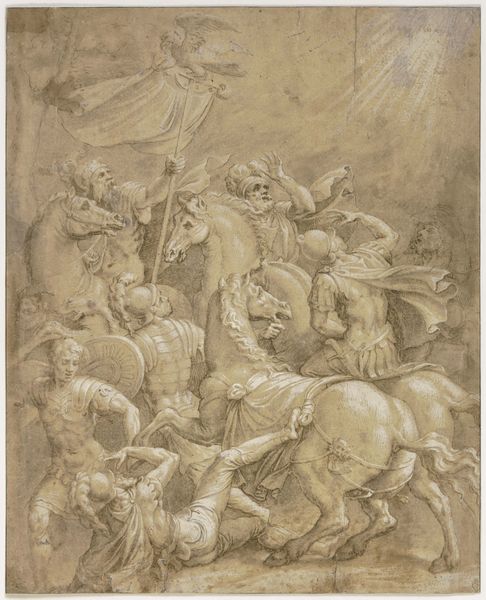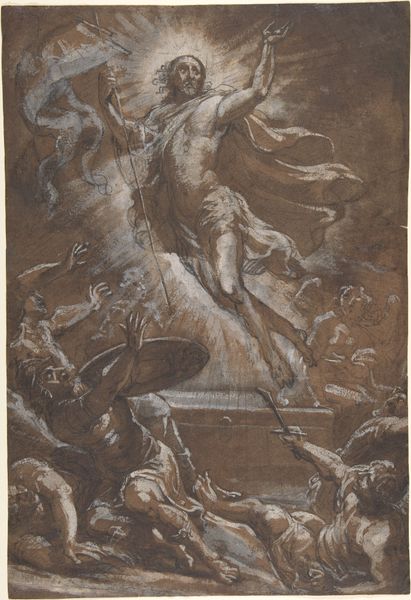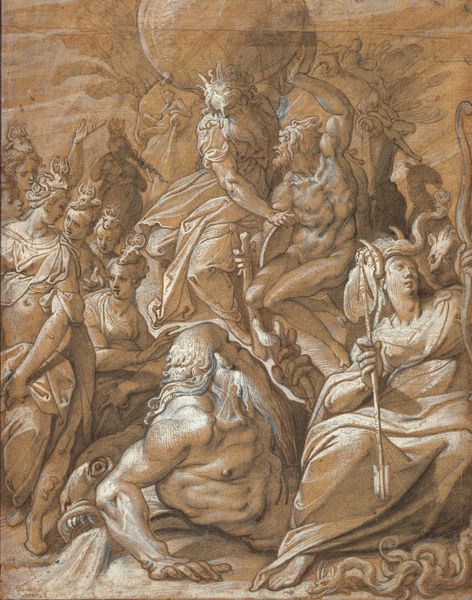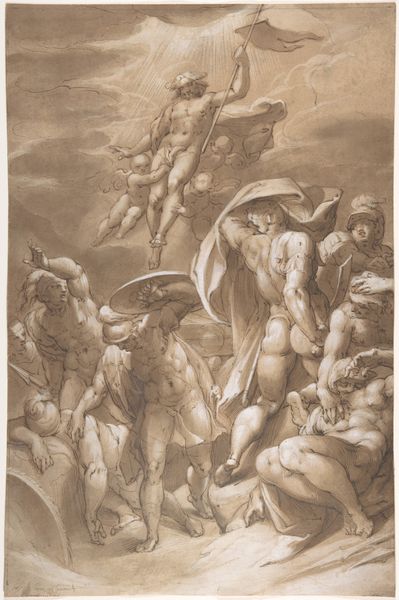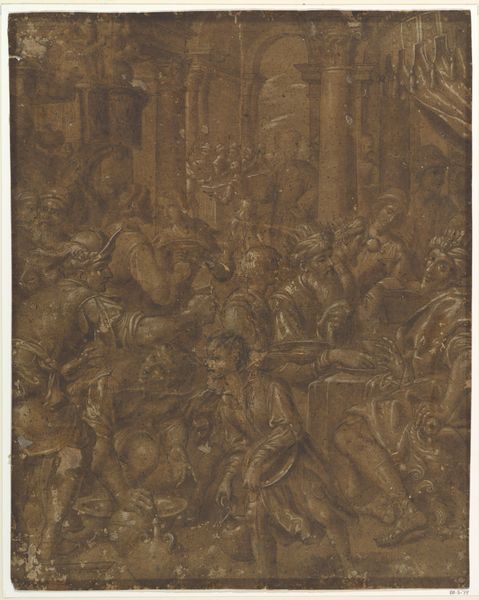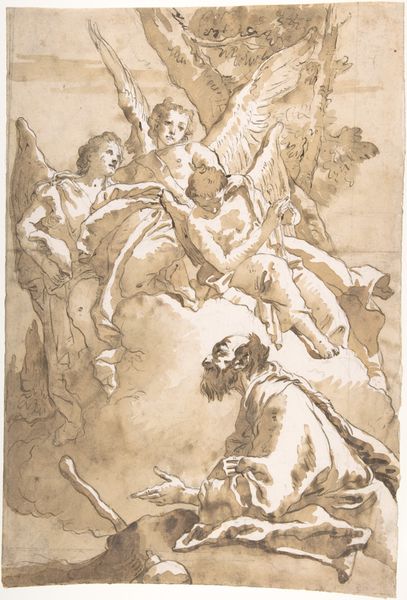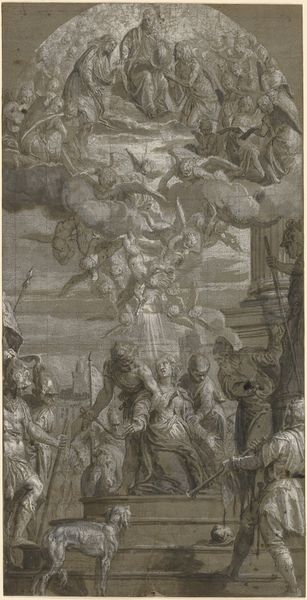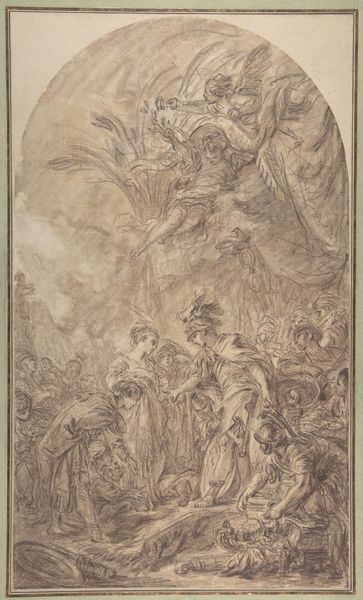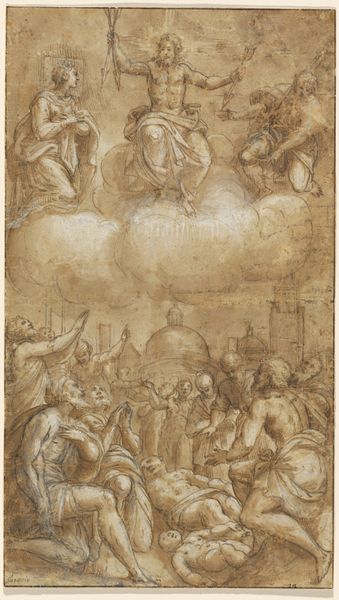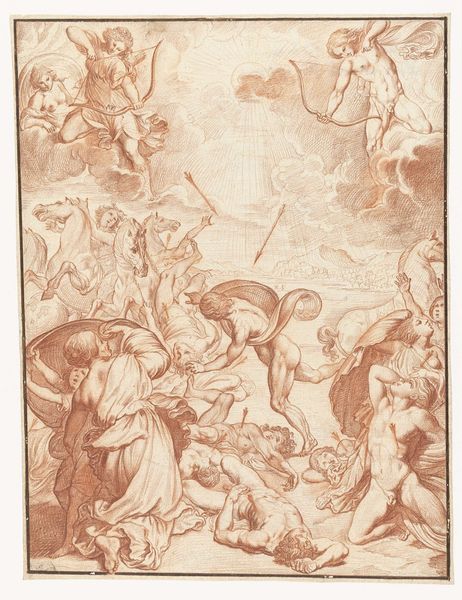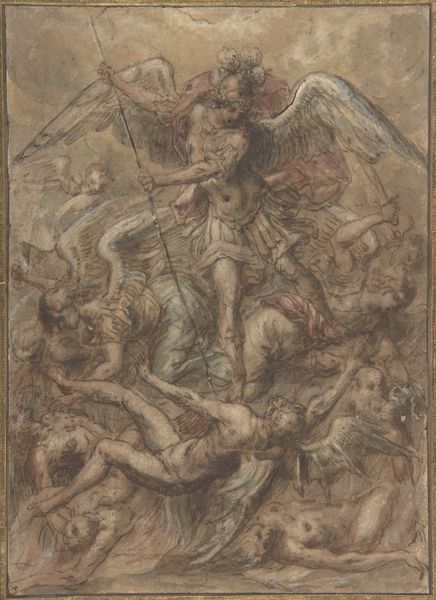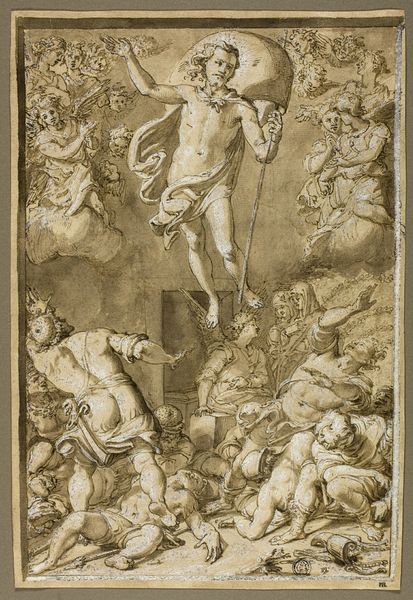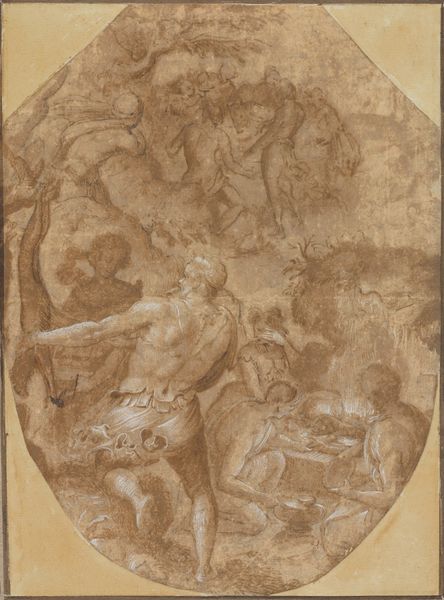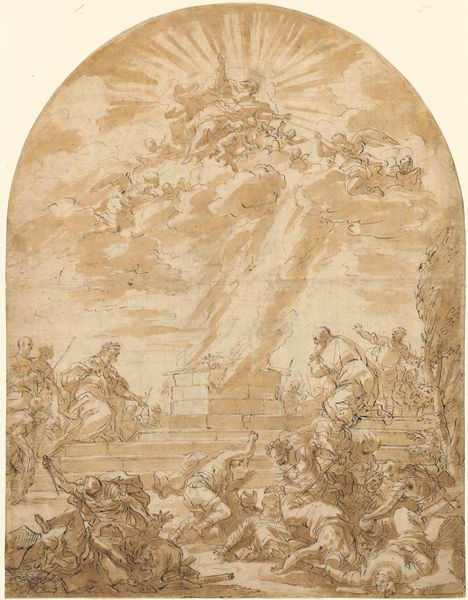
Saint Roch Interceding on Behalf of Plague Victims 1567 - 1573
0:00
0:00
drawing
#
drawing
#
toned paper
#
abstract painting
#
possibly oil pastel
#
oil painting
#
fluid art
#
coffee painting
#
underpainting
#
painting painterly
#
watercolour illustration
#
watercolor
Dimensions: overall: 38.6 x 23.6 cm (15 3/16 x 9 5/16 in.)
Copyright: National Gallery of Art: CC0 1.0
Editor: Here we have Lattanzio Gambara's drawing, "Saint Roch Interceding on Behalf of Plague Victims," created between 1567 and 1573. The monochromatic wash gives it such a somber feel. How do you interpret the overall composition? Curator: The composition exhibits a distinct hierarchical arrangement. Notice how the artist uses line and form to separate the earthly suffering below from the divine intervention above. The dynamism in the lower register, with the figures' gestures and postures, contrasts with the serene, almost weightless quality of Saint Roch and the angels. Do you see how the artist uses light and shadow to further emphasize this separation? Editor: Yes, the light really seems to emanate from the top, doesn't it? Almost a symbolic beacon cutting through the darkness below. Does this division tell us something about Gambara's artistic intentions? Curator: Precisely. Gambara appears to be meticulously constructing a visual argument about salvation and divine grace. The linear precision employed to render Saint Roch, standing atop swirling clouds with attending angels, draws our eye and underscores the importance of the central subject. Furthermore, the artist draws Saint Roch towards the heavens and the afflicted, indicating a powerful intercession, suggesting hope amidst devastation. How might you describe the surface texture and what does that say? Editor: There's a softness, a kind of gentle blending that feels different from the sharper lines of, say, a pen and ink drawing. The medium, perhaps a toned paper with watercolour or wash, contributes to that, right? Curator: It does. That tonal quality enhances the dreamlike and almost otherworldly feeling of this scene, contrasting with the immediacy of the figures writhing from their suffering below. It prompts reflection upon the relationship between material and meaning. The deliberate tonal scale across the piece provides a dramatic but cohesive statement. Editor: That really highlights how the artist controls not just what we see, but how we see it. I hadn't considered how the materials themselves contribute so much to the overall impact. Thank you. Curator: Indeed. By considering elements such as line, light, and materiality, one begins to unlock a deeper reading of any artwork. It allows a work to speak for itself.
Comments
No comments
Be the first to comment and join the conversation on the ultimate creative platform.
